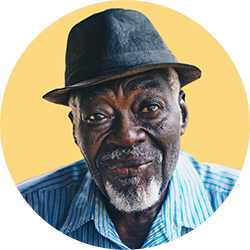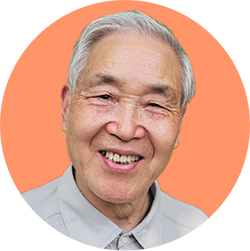Reducing risk in senior living: Increase wellness checks and their benefits without increasing staff
Resident rounding is designed to routinely meet care needs, help ensure safety, decrease the occurrence of preventable events, and proactively address problems before they occur. These wellness checks help staff be more engaged with residents, creating reduced risk and falls, better-quality care, and more satisfied residents and staff. We’re outlining the benefits of these wellness checks—and some unexpected results we’ve found in our research—as well as how to increase them and improve outcomes without additional staffing.
Wellness checks lead to more satisfied staff, driving down fall rates, reducing risk, and increasing occupancy

Reduced falls improve resident outcomes and reduce costs and risks in senior living
Consistent wellness checks mean a greater ability to mitigate risk
The more consistently and effectively wellness checks are conducted, the better the outcomes will be for residents, and the better communities will be able to mitigate risk. So, what if your communities had access to insights from wellness checks conducted hourly, from 7pm to 7am, without increasing staffing or adding to your teams’ workload? What would the impact be?
Nighttime hours are the most vulnerable for residents and the most challenging for staff. From 7 pm to 7 am, risk increases in the following ways4:
had another silent fall
What are silent falls and how do they increase risk in senior living?
Silent falls are unwitnessed fall events in which the resident may be injured, but self-recovers, and does not inform community staff of the incident. These falls pose significant risk to both the resident and the community: residents may have injuries that go unknown and untreated, and communities may face unfounded abuse or neglect claims from injuries of unknown origin. According to the latest CNA report, these falls can result in claims of $296k per incident. SafelyYou Respond™ reveals these previously undetected falls for communities and empowers care staff to more accurately assess each fall’s severity—so residents get the right care right away.
Increase wellness checks without additional staffing
Risk increases overnight. Increased wellness checks can help mitigate those risks. Without adding to your staffing numbers or to your staff’s workload, you can have a clearer picture of resident risk from 7pm to 7am, enabling your staff to better respond to safety issues, including near falls, elopement attempts, climbing on or moving furniture, and more. And you can better address sleep disturbances, which are a leading reason that families turn to senior living—and can begin a cycle of health deterioration for seniors.
SafelyYou Aware™ offers remote, hourly, nighttime wellness checks with SafelyYou team members reviewing 1 minute of video each hour to assess safety concerns. Staff is immediately notified when a safety issue is detected, and empowered to act to help prevent incidents before they occur, reducing risk and improving residents’ safety, well-being, and outcomes.
SafelyYou video data shows, on average, residents are awake or not in their rooms up to 30% of the night, which can impact their overall well-being and care. With SafelyYou Aware™, you can see and better understand the reasons for these sleep disturbances, providing families peace of mind that residents in your communities will get more restful sleep and be at reduced risk, and reassuring them as residents transition into their new living environment. Plus, you’ll give your communities a market differentiator.
Reducing risk and elevating care in senior living

“Early adoption of new technology is the key to our ability to constantly evolve and elevate the services we provide. SafelyYou has enabled us to identify root causes for many resident falls, including physical and environmental risk factors, specific to each resident. As a result, we can implement individually tailored resident interventions to reduce the risk of fall-related injuries.”
Erin Ottenbreit
Senior Vice President of Operations, Cedarbrook Senior Living
To learn more about increasing wellness checks without adding staffing or adding to your staff’s workload, see how SafelyYou Aware™ works. To learn other ways SafelyYou can help you reduce risk in senior living, reach out to us at [email protected].
2SafelyYou 2022 Cost of Falls Report
3Marcantonio, Edward R., M.D. “Delirium in Hospitalized Older Adults.” National Library of Medicine. October 12, 2017.
4Data collected by SafelyYou from Jan. 1, 2021 – Sep. 2022 based on 27,000 on-the-ground events





